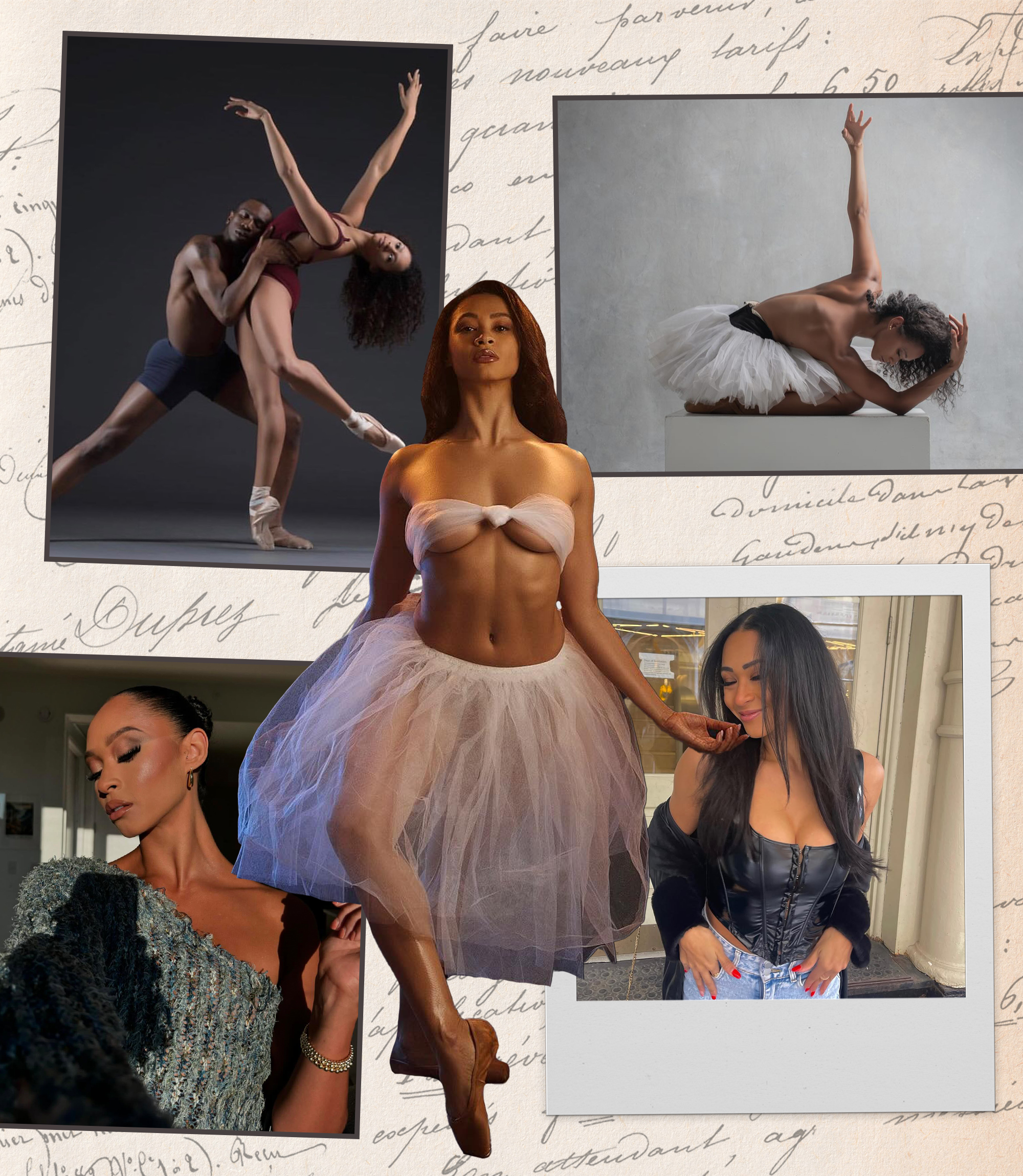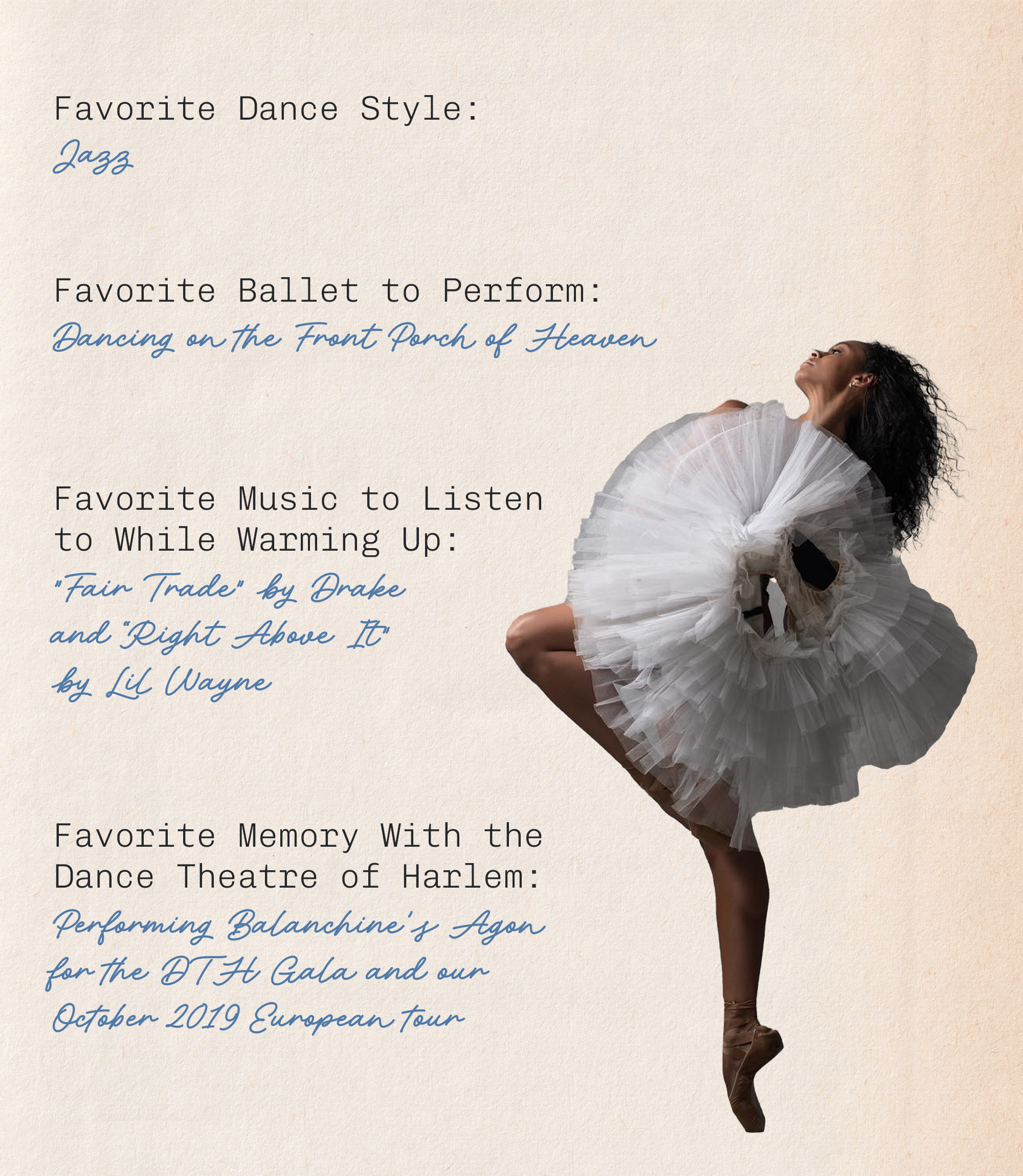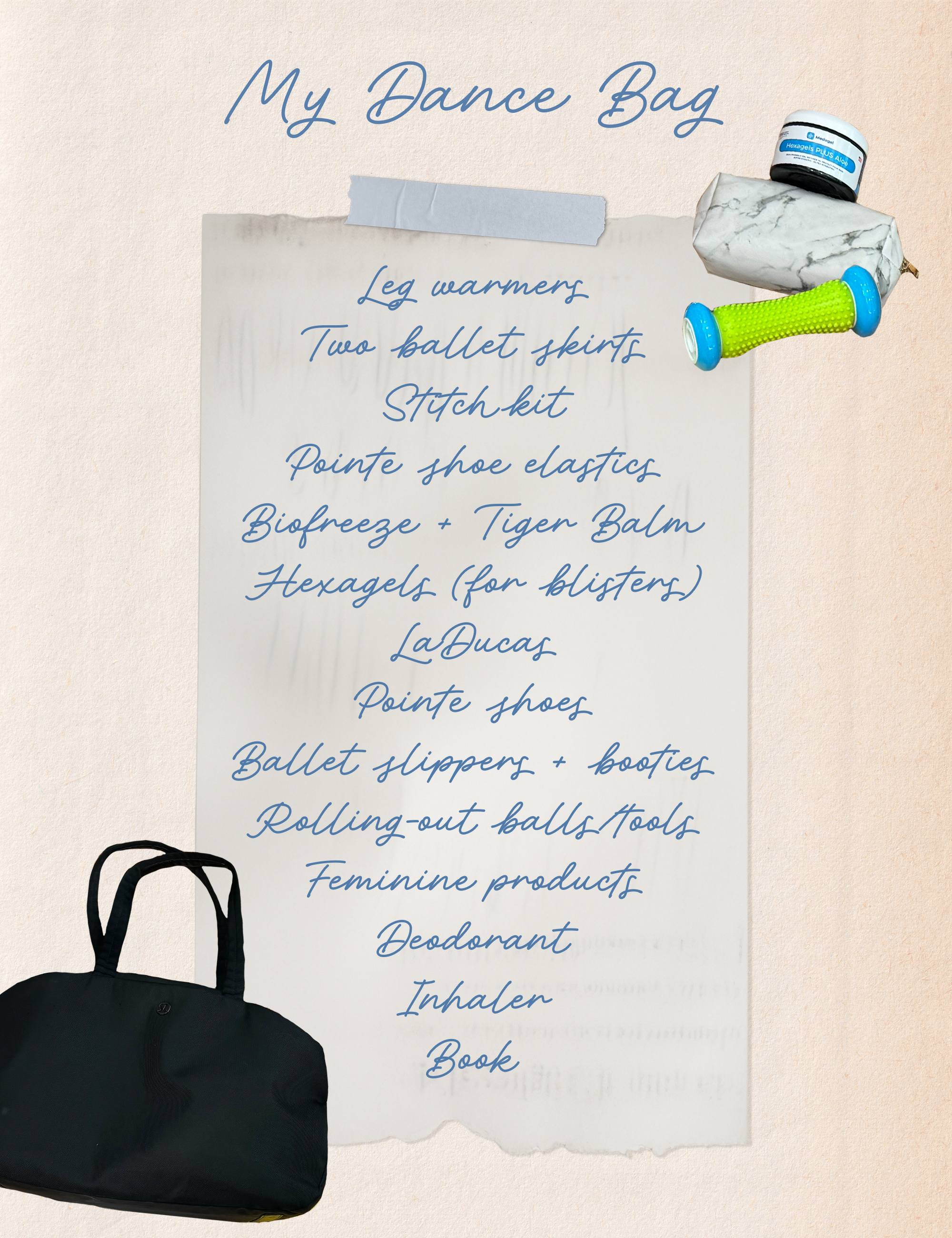There's Nothing Stopping Ballerina Alicia Mae Holloway From Soaring to New Heights

Welcome to En Pointe, a quarterly series that offers a deep dive into the intersection of beauty and dance through the eyes of up-and-coming, multidisciplinary dance talent. Expect an intimate look into the daily lives, dreams, and dance-bag beauty essentials of the industry's best young performers.
Fifteen years have passed since I hung up my pointe shoes, and still, Tchaikovsky scores, Balanchine choreography, and the beauty of a quick change in the wings of a theater occupy a good amount of my brain space. When I'm not dashing to and from appointments or furiously typing, I spend my time in the company of dancers—either by experiencing the art form from afar in the audience or by taking a class here and there. It wasn't until recently, when I began following my favorite artists on social media, that I began noticing a common theme: Many professional dancers were carving careers that were uniquely theirs. This may not sound too groundbreaking, but consider that during any other time period, they likely would have been expected to elevate their love of dance over all other interests.
Today, they are not only aligning themselves with dance companies or choreographers that keep them feeling empowered and enamored by the art form but also finding ways to lean into other enchanting career paths. Recently, I had the opportunity to speak to one such dancer, Alicia Mae Holloway, who transitioned away from the "traditional" world of ballet by getting in touch with sides of herself that she hadn't explored for the bulk of her young-adult years. Below, Holloway reveals how she ultimately became the unique, multifaceted artist and content creator she is today.

Alica Mae Holloway is no stranger to a transition, and she overcame countless pivots with grace during her 15-year career (and she's just 28). Her adoration for the world of dance began when she was just 3 years old in Virginia, dancing in the darkened aisles of auditoriums while her cousin performed onstage. Holloway began training shortly after at a competitive dance school before focusing entirely on ballet. At 14, she auditioned for and was accepted into the School of American Ballet, which required a life-changing move to New York City.
The young dancer was then accepted into the Dance Theatre of Harlem (a predominately Black contemporary ballet company) following her high school graduation, where she performed over the course of seven years. Then, when the world was confronted with the uncertainty of a pandemic, she applied for ABC's The Bachelor and appeared on the show's 25th season with real estate broker and charity founder Matt James. "The Bachelor really opened up the door to so many opportunities outside of my ballet company like music videos, commercials, and content creation," she says.
A strong interest in commercial dance and content creation inspired her departure from DTH. "It was a dream of mine, and the timing never really worked out. I knew I wanted to do it, but it was [a matter of] where and when," Holloway explains. After getting signed to a modeling agency, she began posting videos on TikTok three to five times a day, a few of which went viral (most notably about her dance career, experience on The Bachelor, and adoption) and gaining a large following. Now, she is pivoting once more: this time toward acting.

For those who have never trained in the art form, the life of a professional ballet dancer can seem mysterious. Many dancers begin at a young age, molding their bodies and minds into the best possible version of themselves to grace the stage. Next comes the nonstop auditioning for roles in performances and, eventually, the companies that will catapult them into careers. Holloway's transition from her company role into commercial dance is further proof that while ballet will always have its deeply "'traditional" roots, what it means to be a ballerina continues to change.
Holloway acknowledges what being a modern-day ballerina means and theorizes what her new, uniquely crafted career path could become in years to come. "Back then, it was, 'You're a jazz dancer, a ballerina, modern dancer, or tapper.' There was this idea that you had to be pigeonholed into one style of dance," she says. "I really locked into ballet but found that when I went to summer programs and auditions, because of my background, I was able to execute so much in different settings." Becoming a multidisciplinary dancer helped Holloway move from her competition dance background to ballet, but she continues to grow in other areas.

While she has recently burst onto the acting scene with film, she credits her background in many styles of dance as one of the biggest driving forces behind her recent success. "I just finished filming a movie, and if I hadn't studied jazz, contemporary, or Acro dance, I would have never booked this job," continues Holloway. "It's so important nowadays to be a well-versed and multifaceted type of dancer." .
Holloway has expanded her dance career to include many of her interests and talents, but she didn't always have the support system to make it happen. "I didn't grow up around a narrative that said I could do that. The only place I truly heard that was from my parents," explains Holloway. "I had people on my journey who told me to be more realistic—I could be a dance teacher, but Broadway is too unreachable." As someone who pushes the limits of what a dancer can be, she now strives to inspire everyone to live their lives how they want to by their own standards.
Taking Up Space in the Dance World
Another huge contributor to how she views the world of ballet has been her experience as a woman of color in a predominately white industry. Until Holloway began dancing with DTH, her exposure to dancers who resembled her was limited living in a small West Virginia town. "There were three dancers of color at our studio, including me. I didn't think too much about it, but I recognized that when I looked at professional dancers in dance magazines, none of them looked like me," she explains. Then, she was introduced to Misty Copeland, who made history in 2015 as the first African American female principal dancer at the American Ballet Theatre.
Her entire perspective of Black women in ballet changed. "I was like, 'Wait, she looks like me!' She's strong, she's muscular, she's beautiful. She made me realize that I could accomplish this too," says Holloway. Shortly after, she realized young dancers would look up to her in a similar way after overhearing a young Black ballet dancer gush over seeing her following a DTH performance. "I was complaining about these early morning shows. Meanwhile, this little Black girl who had never seen anyone who looked like her doing something like this [was] given the hope and knowledge that she too can be a ballerina!" she continues.

However, like any art, ballet isn't without its biases and flaws. Have you noticed there's only one color for pointe shoe emoji in your phone (powder pink)? Pointe shoes are designed to be flesh-toned and worn with matching tights to create one line from the tips of the toes to the legs and upward. Throughout history, many ballet dancers of color were left with one option: pancaking, or using makeup foundation or pink calamine lotion to match the color of the shoes to their skin. Holloway, for example, grew up wearing pink ballet slippers and pointe shoes until fellow DTH ballerina Ingrid Silva encouraged her to find and wear ones that matched her natural skin tone.
Holloway's experience with her natural curls as a dancer is unfortunately also common among the many dancers with textured strands. She shares that while she has officially mastered caring for her hair with the help of masks and gentle styling, the process was not without trial and error. Holloway began straightening her curls frequently to make wearing them in a bun easier and allow for easy transitions from updos to loose hair for the performances that required them. "It's time to embrace natural curls and for different hair textures in the arts (especially in the ballet world) to be accepted," says Holloway. "Your natural hair is beautiful, and that's something that should be celebrated."
When it comes to skincare, landing on a routine that works for her has been a much easier task thanks to genetics, but she's definitely run into a snafu or two leading to occasional breakouts. "Sometimes backstage after a show (and before post-receptions), I would shower in the dressing room and use pink soap or ivory soap and just wash my face. It wouldn't even be a makeup wipe," she admits. Now, no matter how long of a day she's had, the ballerina maintains a deep-cleansing routine and always replenishes her skin barrier with moisture.

whowhatwear





